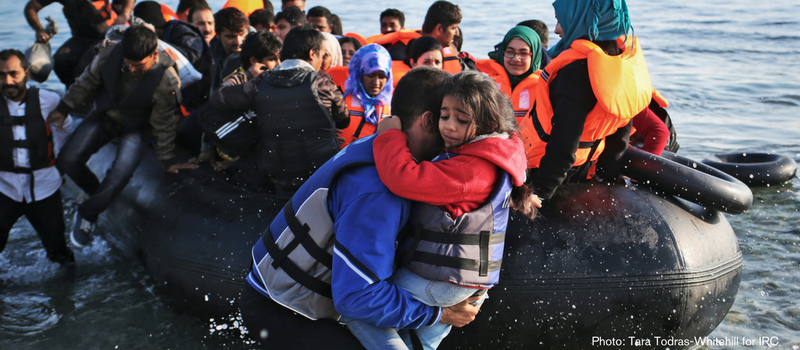In March, the Syrian conflict enters into its seventh year. This protracted war has created nearly 5 million refugees and 6 million internally displaced persons (IDPs). In Lebanon, one in five people in the country are Syrian refugees; there are more than 600,000 Syrian refugees in Jordan; and there are more than 2.5 million Syrian refugees living in Turkey.
Since 2013, the WRC has been at the forefront of humanitarian efforts to research and develop guidance for the women, children, and youth refugees affected by the Syrian crisis.
Among some of our efforts:
Assessing protection risks for refugee women and girls in Europe
During 2015 – 2016, the WRC undertook a series of trips to assess the protection risks facing women and adolescent girls fleeing into Europe in order to provide information that will feed into–and inform –the protection responses of European governments and humanitarian agencies responding to the crises. Assessments were undertaken in Greece and Macedonia, in Serbia and Slovenia, and in Germany and Sweden. The WRC also took a trip to Greece, and then to Turkey, to assess the impact of the implementation of the EU – Turkey agreement
See more of this important work here.
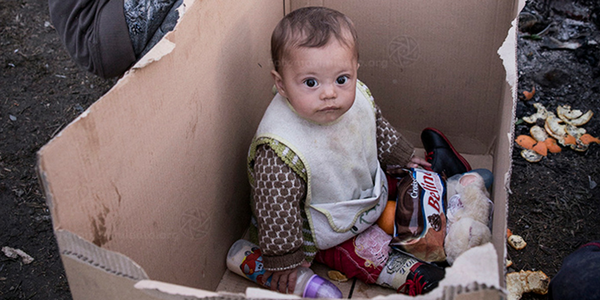 Miriam at the refugee camp in Idomeni, Greece. © Fotomovimiento/RoberAstorgano
Miriam at the refugee camp in Idomeni, Greece. © Fotomovimiento/RoberAstorgano
Promoting safe and productive livelihoods for women
We've been leading humanitarian efforts in developing guidance on appropriate livelihoods for displaced women and youth that recognize their skills, experience, and capacities. Our recommendations are oriented around local markets, are comprehensive in approach, and are both safe and sustainable. The goal is to strengthen women’s self-reliance and resilience. At the same time, these initiatives have to take into consideration that earning income can increase women's risk of harm and violence. Wepartnered with organizations in the region, the Near East Foundation in Jordan, and Oxfam in Northern Iraq, to strengthen the design and implementation of their livelihood programs targeting women to ensure that they are safe and market-driven.
We're currently working with Mercy Corps in Jordan on piloted guidance to make cash transfers more protective, especially against GBV risks.
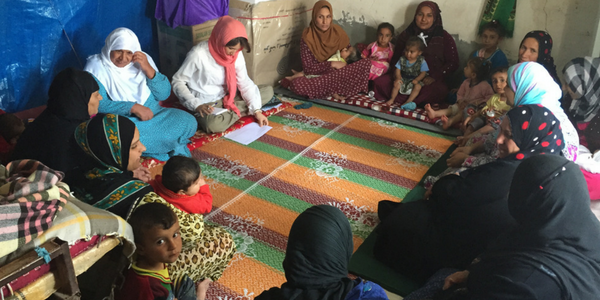 A group participating in a livelihoods assessment in one of the five Iraqi villages WRC visited.
A group participating in a livelihoods assessment in one of the five Iraqi villages WRC visited.
Empowering adolescent girls
We work with other organizations, including Mercy Corps, Save the Children, Danish Refugee Council, UNICEF, and the International Rescue Committee to support Syrian refugees in emergency contexts, including in Iraq, Lebanon, Turkey, Egypt and Jordan. We also work to strengthen their programming for adolescent girls, one of the most at-risk populations in a refugee crisis. Currently, we're researching child marriage in Lebanon. Learn more about adolescent girls here.
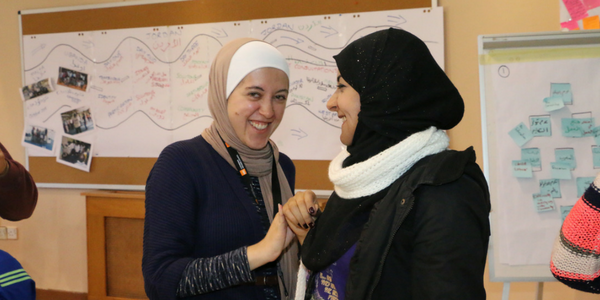 Two adolescent Syrian refugees at a Youth Consultation in Jordan.
Two adolescent Syrian refugees at a Youth Consultation in Jordan.
Increasing the capabilities of refugees with disabilities
Since 2013, the WRC's disability program has been responding to the Syrian refugee crisis by providing technical support and training on disability inclusion across Lebanon, Jordan and Iraq. We have conducted field research, documenting the protection concerns faced by women, children and youth with disabilities, and have provided technical support and mentoring to operational partners on including persons with disabilities in gender-based violence prevention efforts, as well as adolescent and youth programs. More recently, we examined how current and emerging resilience-based programming – programming that strengthens skills, capacities, strengths, and assets – can promote protection and empowerment of Syrian refugee women, children, and youth with disabilities.
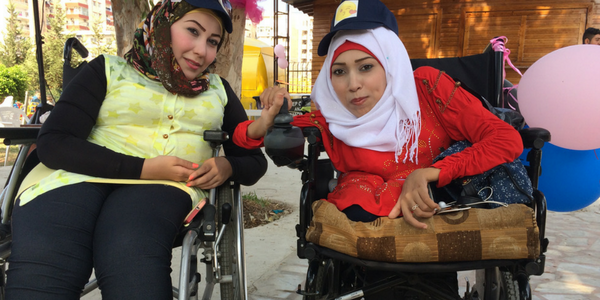 Two adolescent girls participating in Danish Refugee Council's Adolescent Girls Program
Two adolescent girls participating in Danish Refugee Council's Adolescent Girls Program
in North Lebanon. © Boram Lee
Preventing gender-based violence in urban areas
We've been researching the unique risks faced by LGBT refugees, women and girls, male survivors, refugee sex workers, and refugees with disabilities in Beirut, and developing strategies and pilot programs for mitigating their risks. Pilot projects were implemented focused on risks reduction for refugees with intellectual disabilities and transgendered refugees – two highly-neglected populations.
Capturing the impact of humanitarian work
Humanitarian response focuses on addressing urgent, life-saving, and basic needs, but data collection generally captures only the impact of individual projects – not the collective impact of service provision at the household level. In response, we developed a “Well-being and Adjustment Index” that captures improvements in household well-being across twelve sectors that practitioners support, such as shelter, water and sanitation, education, health, safety, and employment. The index tracks 300 Syrian refugee households in Lebanon to measure improvements, or the lack thereof, in well-being as a result of humanitarian efforts. The longer-term objective is to adapt and apply the index across displacement contexts globally to facilitate the better targeting of those in need and the graduating off of external assistance those who demonstrate an appropriate level of self-sufficiency.
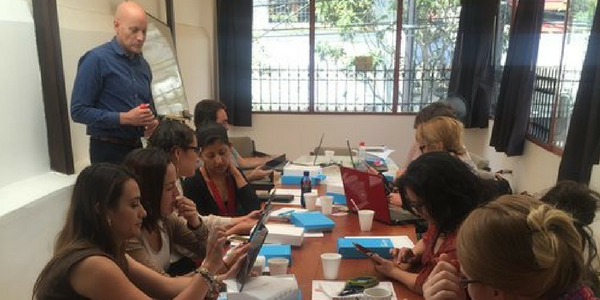 A collaboration is underway with RefugePoint, an organization testing a similarly focused monitoring tool, to bring together like minded organizations to use the vast global experiences to collectively tackle this challenge.
A collaboration is underway with RefugePoint, an organization testing a similarly focused monitoring tool, to bring together like minded organizations to use the vast global experiences to collectively tackle this challenge.
Assessing gender integration across the humanitarian response
We conducted an audit of gender integration across the humanitarian response in Jordan in 2014, and found major gaps in the inclusion of and sensitivity for the specific needs of women and girls. WRC’s recommendations resulted in a UN Women led gender dashboard that assesses gender integration across all sectors, and was integrated into humanitarian coordination mechanisms on-the-ground.
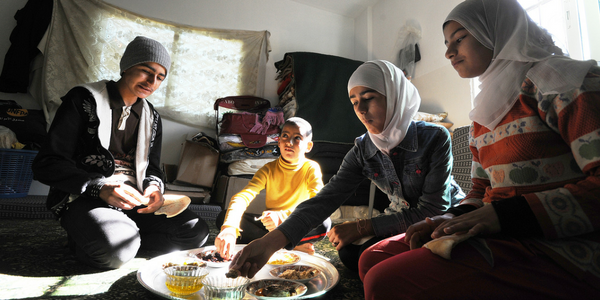 Syrian refugee children have breakfast in their rented room in Ramtha on the Jordan-Syria border. © Peter Biro/IRC
Syrian refugee children have breakfast in their rented room in Ramtha on the Jordan-Syria border. © Peter Biro/IRC
Capturing the impact of discrimination in nationality laws and promoting equality
In 2013, WRC in collaboration with Tilburg University, published a report on gender discrimination in nationality laws resulting in statelessness, and the impact it has on the lives of women and children. The report included Jordan as a case study, and subsequent work has included a regional workshop in Lebanon, and work with Syrian activists and a submission on Syria for the Human Rights Council for the Universal Periodic Review in June 2016.
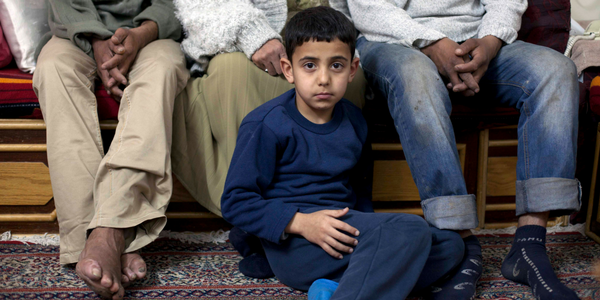 A young boy in Jordan who is stateless as a result of the nationality laws.
A young boy in Jordan who is stateless as a result of the nationality laws.
The Syrian Refugee Crisis is complex and remains nowhere near resolved, with many countries, including the U.S., making resettlement difficult for the millions of vulnerable women, children and youth caught in the crossfire. If you’d like to support the critical work we are doing around the Syrian crisis and other conflicts around the world, please consider a tax-free donation today. Together, we can envision a world in which refugee and internally displaced people are safe, healthy and self-reliant.


